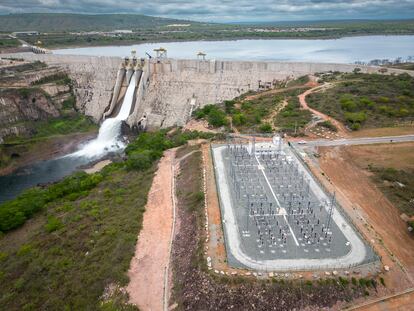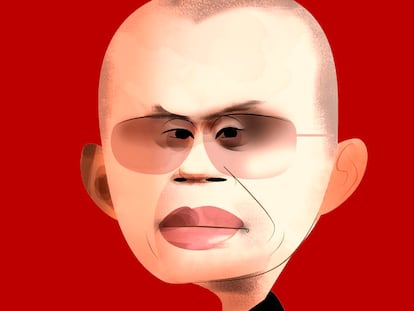Fewer loans and more interest: External debt is strangling the poorest countries
The 24 lowest-income nations could see their debt-servicing costs rise by 39% between 2023 and 2024, according to the latest World Bank report


The money that the world’s poorest countries need to open schools, build bridges and modernize hospitals is increasingly more expensive and difficult to obtain. Over the last decade, low- and middle-income countries have accumulated significant external debt and, consequently, have made a shift towards less conventional sources of financing that charge more interest, such as bilateral loans with China. Developing countries, for example, spent a record $443 billion to service their external and publicly guaranteed debt in 2022 — 5% more than in 2021. This took place against the backdrop of the biggest rise in interest rates in four decades. That’s according to the World Bank’s annual report on external debt, which warns that in order to meet their debt payments, low-income countries have had to make cuts in other critical areas such as public health, education, and infrastructure.
In 2022, the combined external debt stock of the 75 countries that can access credits granted by the International Development Association (IDA) — the World Bank institution that provides support to the poorest nations — rose to an all-time high of $1.1 trillion, more than double the figure in 2012. Interest payments have also quadrupled in the last 10 years, reaching a record $23.6 billion in 2022. However, according to the World Bank, the situation could worsen between 2023 and 2024, with the debt-servicing costs for the 24 poorest countries expected to rise by 39%.
“These developments constitute a grave danger to prospects for progress on global development goals. Developing countries today also confront higher energy prices, steeper interest rates, and geopolitical turmoil in key regions of the world,” the study warns. In the past three years alone, the number of sovereign debt defaults in these countries has surged to 18, which, according to the World Bank, outstrips the total of the previous two decades.
The World Bank states that in developing countries, new external loan commitments to public and publicly guaranteed entities fell 23% to $371 billion, the lowest level in a decade. For the first time since 2015, private creditors collected more in principal repayments than they disbursed in loans, totaling $185 billion. New bond issuance by low-or middle income countries fell by half, while for IDA-eligible countries, it fell by more than 75%.
The indebted countries have had to deal with several battle fronts at the same time: first, the risk that loans with variable interest rates will suddenly increase, since more than a third of the external debt of these nations belongs to this type. Second, they face the payment of accrued interest for sticking to programs that allowed them to suspend payments during the Covid-19 pandemic. And finally, the constant threat of the dollar appreciating or exports falling.
Pause in interest rate rises
In mid-March 2022, the U.S. Federal Reserve began a race to calm the general price increases caused by the Covid-19 pandemic and the war in Ukraine. It did so by making access to credit more expensive, taking rates to the range of 5.25%-5.50%, the highest seen in the last 22 years. Other central banks, including the European Central Bank, followed suit. More than a year and a half later, the goal appears to have been achieved: inflation is beginning to moderate. However, along the way, developing countries have found that accessing credit from traditional multilateral entities has become more expensive than ever before.
“Record debt levels and high interest rates have set many countries on a path to crisis,” said Indermit Gill, the World Bank Group’s chief economist and senior vice-president, who emphasizes that debt has become an almost paralyzing burden for these economies. Currently, 60% of low-income countries are at high risk of debt distress or are already in this situation.
It appears that interest rates will stabilize in the future. The U.S. Federal Reserve committee updated its forecasts for 2024 a few weeks ago and all signs indicate that the entity will cut rates by 0.75 points until the end of the year, which would, in part, deflate the price of future debt. For the European Central Bank, the forecast is similar. The first rate cuts in Europe could arrive in March or June. However, until these decisions are implemented, countries will have to face an unfavorable credit scenario.
World Bank sources point out that transparency is crucial to improve debt management and its sustainability. “The first step in avoiding a crisis is having a clear picture of the challenge,” said Haishan Fu, Chief Statistician of the World Bank and Director of the World Bank’s Development Data Group.

The Chinese bank
Between 2012 and 2022, commitments from China to public and publicly guaranteed borrowers in low- and middle-income countries totaled $254 billion. The Asian giant’s loans were directed primarily to oil-producing states, its regional neighbors and those along the Belt and Road corridor, as well as mineral-rich nations and countries in sub-Saharan Africa.
The report details that China’s commitments increased rapidly in the first half of the decade, reaching $52 billion in 2016. Of this amount, 57% went to sub-Saharan countries. However, transactions fell to a record low of $5.4 billion in 2022.
Sign up for our weekly newsletter to get more English-language news coverage from EL PAÍS USA Edition
Tu suscripción se está usando en otro dispositivo
¿Quieres añadir otro usuario a tu suscripción?
Si continúas leyendo en este dispositivo, no se podrá leer en el otro.
FlechaTu suscripción se está usando en otro dispositivo y solo puedes acceder a EL PAÍS desde un dispositivo a la vez.
Si quieres compartir tu cuenta, cambia tu suscripción a la modalidad Premium, así podrás añadir otro usuario. Cada uno accederá con su propia cuenta de email, lo que os permitirá personalizar vuestra experiencia en EL PAÍS.
¿Tienes una suscripción de empresa? Accede aquí para contratar más cuentas.
En el caso de no saber quién está usando tu cuenta, te recomendamos cambiar tu contraseña aquí.
Si decides continuar compartiendo tu cuenta, este mensaje se mostrará en tu dispositivo y en el de la otra persona que está usando tu cuenta de forma indefinida, afectando a tu experiencia de lectura. Puedes consultar aquí los términos y condiciones de la suscripción digital.
More information
Archived In
Últimas noticias
Most viewed
- Sinaloa Cartel war is taking its toll on Los Chapitos
- Oona Chaplin: ‘I told James Cameron that I was living in a treehouse and starting a permaculture project with a friend’
- Reinhard Genzel, Nobel laureate in physics: ‘One-minute videos will never give you the truth’
- Why the price of coffee has skyrocketed: from Brazilian plantations to specialty coffee houses
- Silver prices are going crazy: This is what’s fueling the rally










































